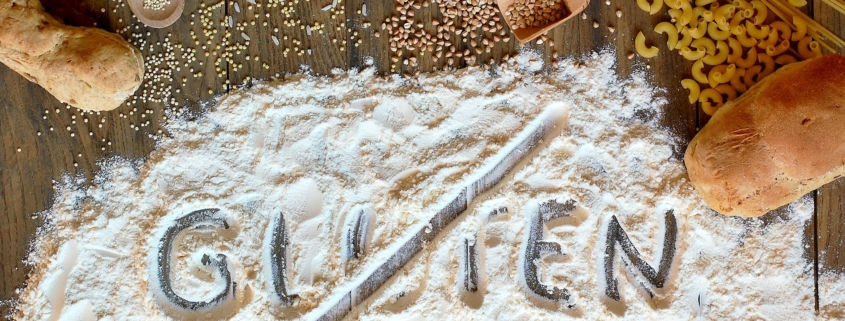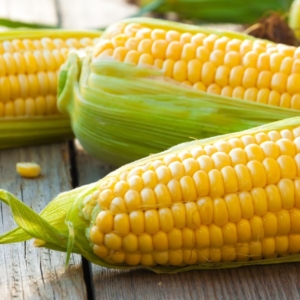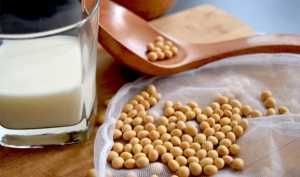The Secret Hiding Places Of Corn, Gluten, And Soy
The Secret Hiding Places Of Corn, Gluten, And Soy
The number of names and hiding places of corn, gluten and soy is staggering. This guide is designed as a tool to help you successfully identify where they may be hiding in plain sight (if you only knew what to look for). Please note that while it is thorough, it should not be considered complete. For most people with sensitivities, fortunately, 100% avoidance, especially to non-ingestibles, is not necessary for relief of symptoms. For some, the dose makes the poison, and for others, the slightest exposure could cause life-threatening symptoms or weeks of suffering.
If you don’t know, and only suspect you have a sensitivity to these items, you may want to do some further explorations. A Challenge And Elimination Diet (C&E) is an excellent place to start. If you want to make it easy on yourself you could skip the hard part and go straight to a food intolerance test! That way you could know in one week what to stay away from, rather than spend 2 months of trial and error. Food intolerance tests are also appropriate for those too debilitated to go through the C&E process, because they take time, and there is always that possibility that items will be missed.
You still have to have to know where Corn, Gluten, and Soy hide no matter which option you choose, so read on.
As you look over the following lists, I encourage you not to get overwhelmed. You will become more and more familiar with what to watch out for over time and find go-to products that work for you. For the most part, while the initial learning curve may be steep—especially if you are highly sensitive, once you get the hang of it, it’s really not so hard.
If you are a highly sensitive person, you likely have some underlying issues that need addressing, like leaky gut, high levels of toxins, or an overwhelmed nervous system. These are you should seek professional help for. Just because you are hypersensitive now, doesn’t mean you will be forever.
Hiding places of Gluten
Common foods you probably already know contain gluten:
- Barley
- Bulgur

- Couscous
- Kamut
- Oats (if not gluten-free)
- Rye
- Semolina
- Spelt
- Triticale
- Wheat
- Wheat germ
Common foods that may contain hidden gluten:
- Artificial coffee creamer
- Beer
- Bouillon cubes
- Broth/stocks
- Candy
- Certain ground spices
- Certain veined cheeses
- Chewing gum
- Chips
- Cold cuts
- Flavored teas
Flavored rice
- Fish sticks
- Flavored crackers
- French fries
- Gravies
- Hot dogs
- Imitation seafood
- Instant coffee and other instant hot drinks
- Ketchup
- Matzo flavor
- Mustard
Mayonnaise
- Pasta side dishes
- Rice mixes
- Roasted nuts
- Soy sauce
- Salad dressing
- Seitan (wheat gluten, used in meat substitutes)
- Self-basting turkey
- Soy and teriyaki sauces
- Tinned baked beans
- Tomato sauces
- Vegetable cooking spray
- Veggie burgers
- Vodka
- Wine coolers
Ingredients to watch out for that may contain gluten:
- Artificial color
- Baking powder
- Barley extract or lipids
- Brown rice syrup
Caramel color/flavoring (frequently made from barley)
- Citric acid (can be fermented from wheat, corn, molasses or beets)
- Coloring
- Dextrins (primarily corn and potato, but can come from wheat, rice, tapioca)
- Diglycerides
- Emulsifiers
- Enzymes
- Fermented grain extract
- Fat replacers
- Flavorings
- Food starch
- Gelatinized starch
- Glucose syrup
- Glycerides
- Hydrolysate
- Hydrolyzed malt extract
- Hydrolyzed oat flour or protein
- Hydrolyzed plant protein (HPP)
- Hydrolyzed soy protein
- Hydrolyzed vegetable protein (HVP)
- Malt extract
- Maltodextrin (corn, wheat, potato, rice)
- Mustard powder (some contain gluten)
- Monosodium Glutamate (MSG)
- Modified food starch (source is either corn or wheat)
- Natural juices
- Natural flavoring, fillers
- Peptide bonded glutamine (hydrolyzed wheat gluten)
- Rice malt (contains barley or Koji)
- Rice syrup (contains barley enzymes)
- Sulfonate
- Stabilizers
- Starch
- Triticum aestivum (common or bread wheat)
- Wheat starch
- Whey protein concentrate
- Whey sodium caseinate
- White vinegar or white grain vinegar
- Yeast extract
Gluten in non-food products, like cosmetics: 
It depends on your degree of sensitivity as to whether or not you need to go the extra mile with this.
If you need to know how to avoid gluten in non-food items, here are some common items where gluten can be found and below is a list of common ingredients that may contain gluten.
Non-food items that may contain gluten:
- Dental sealants
- Dental plastics (some)
- Glue on stamps and envelopes
- Hairspray
- Laundry detergent
- Lip balms
- Lotions
- Makeup
- Medications
- Mouthwash
- Playdough
- Shampoo
- Soap
- Sunscreens
- Toothpaste
- Low quality vitamins and supplements
- Amino peptide complex (from barley)
- Avena sativa (oat starch, extract, flour or oil
- Barley (extracts, lipids)
- Beta glucan (from oats)
- Cocodimonium hydroxypropyl hydrolyzed
- Dextrin
- Fermented grain extract
- Hordeum distichon (barley extract)
- Hordeum vulgare (barley extract)
- Hydrolyzed wheat protein (HWP) also seen as wheat hydrolysate, enzyme-modified gluten or wheat peptides
- Phytosphingosine extract (fermented yeast)
- Pregelatinized starch (corn, wheat, potato, tapioca)
- Secale cereale (Rye)
- Sodium lauroyl oat amino acid
- Sodium starch glycolate (commonly potato, but has other starch sources)
- Stearidimoium (hydrolyzed wheat protein)
- Triticum vulgare (wheat germ oil)
- Tocopherol/vitamin E
- Wheat germ (extracts, glycerides, oil, protein)
- Xantham gum (may be derived from wheat)
- Yeast extract
Cross-Reactivity:
When you are gluten sensitive your body is creating antibodies against gluten. Those same antibodies can also recognize proteins in other foods that have similar structures and mimic the reaction they have to gluten. Not everyone will have a reaction to all of these foods (or any of them).
If you feel like you have successfully eliminated gluten from your diet and household items and are still experiencing gluten-associated symptoms, you may want to consider the following:
- Buckwheat
- Sorghum
- Millet
- Amaranth
- Quinoa
- Corn
- Rice
- Potato
- Hemp
- Teff
- Soy
- Milk (Alpha-Casein, Beta-Casein, Casomorphin, Butyrophilin, Whey Protein and whole milk)
- Chocolate
- Yeast
- Coffee (instant, latte, espresso, imported)
- Sesame
- Tapioca (a.k.a. cassava or yucca)
- Eggs
Hidden Corn
The following are, or may be, made with corn. This is not an exhaustive list but will be very helpful in eliminating unintentional exposures. Generic use of ingredients without specifying their nature, for example: “natural” flavor, vegetable (which vegetable?), starch (which starch?), syrup, can be an issue, so when in doubt, avoid. If corn turns out to be a problem for you, you will discover over time how vigilant you need to be in your avoidance to remain symptom free.
- Ascorbic Acid (Vitamin C)
- Baking Powder (corn starch)
- Brown Sugar – look for use of Caramel color. Domino’s Brown sugar no longer uses Caramel color
- Calcium Citrate – the calcium salt of citric acid. See Citrate below for details.
- Caramel – coloring used in soft drinks, derived from corn “or cane sugar.” The “or” in Coca-Cola’s explanation refers to a temporary change to make the ingredients Kosher for Passover. The rest of the year, it is from corn.
- Cellulose, Vegetable, Powered, etc.
- Citrate – can refer either to the conjugate base of citric acid, or to the esters of citric acid. An example of the former, a salt is trisodium citrate; an ester is triethyl citrate. Forms of Citrate include: Calcium Citrate, Magnesium Citrate, Potassium Citrate, Sodium Citrate, and more.
- Citric Acid – the source sugar is corn steep liquor along with hydrolyzed corn starch
- Corn – of course! Can’t forget the obvious.
- Corn Meal – items baked sitting on Corn Meal such as Bagels, Breads or Pizza, may not list Corn Meal as an ingredient
- Corn Starch – in most over the counter medicines that come in a dry pill form. Yes, this includes Benedryl too. Watch for Corn Syrup in the liquid forms.
- Corn Syrup
- Decyl Glucoside – used in personal care products such as shampoo.
- Dextrin, Maltodextrin – thickening agents found in sauces (check those frozen veggies!) salad dressings, and ice cream
- Dextrose (glucose) – corn sugar, found in cookies, ice cream, and paired with glucose in hospital IVs unless specified not to! Can also be used as a carrier with anesthetic shots such as Lidocaine and Novocain! Dextrose is also injected into meat, lunch meats and deli cuts. Be wary of “honey baked” items, the sweet flavor may not be from honey.
- Ethanol – made by fermenting sugars produced from corn starch.
- Ferrous Gluconate – i.e. as found in canned olives, and comes from corn or potato acid.
- Flavoring – Artificial or “Natural Flavors”
- Golden Syrup – Sometimes recommended as an alternate to Corn Syrup, but it may contain Corn Syrup as well.
- Honey – May contain corn syrup, as HFCS is sometimes fed to bees, resulting in corn in the honey produced.
- Hydrolyzed Vegetable Protein (HVP)
- Iodized Salt – Morton’s FAQ explains why they add Dextrose (corn) to their salt.
- Lactic Acid – Commercially, lactic acid can be made synthetically from chemicals or organically as a byproduct of corn fermentation.
- Lauryl Glucoside – is a surfactant used in cosmetics.
- Magnesium Citrate – Magnesium salt of citric acid.
- Magnesium Stearate
- Malic Acid
- Malt
- Malt Flavoring
- Maltitol – (also known as Maltisorb and Maltisweet)
- Maltodextrin
- Maltose
- Mannitol – A naturally occurring alcohol that is often combined with corn derived sugars.
- Methyl Gluceth – an emollient used in cosmetics manufactured from corn sugar and corn starch.
- Modified Food Starch
- Monosodium Glutamate (MSG) – The MSGMyth site explains MSG is made from corn.
- Polydextrose – is synthesized from dextrose, and contains sorbitol and citric acid. It is a food ingredient classified as soluble fiber and is frequently used to increase the non-dietary fiber content of food, replace sugar, reduce calories and reduce fat content. Note: Dextrose, Sorbitol, and Citric Acid are all on this list of ingredients derived from corn.
- Polylactic Acid (PLA) – Plastic made from corn starch (U.S.) or sugarcane.
- Polysorbates (i.e. Polysorbate 80)
- Potassium Citrate – See Citrate above for details.
- Powdered Sugar – contains corn starch
- Saccharin – in powder form IS Sweet’N Low and therefore contains Dextrose.
- Sodium Citrate – See Citrate above for details.
- Sodium Erythorbate – is produced from sugars derived from sources such as beets, sugar cane and corn. It is a food additive used predominantly in meats, poultry, and soft drinks.
- Sodium Starch Glycolate – is the sodium salt of a carboxymethyl ether of starch. It can be derived from any starch source (rice, corn, potatoes, etc).
- Sorbitan – is a mixture of chemical compounds derived from the dehydration of sorbitol.
- Sorbitan Monostearate – an ester of sorbitol and stearic acid. You will see this ingredient used in Yeast (and possibly other places as well).
- Sorbitol – You will find Sorbitol in Sugar Free items such as candy, chewing gum, cosmetics, mouth wash, and toothpaste
- Starch – often this is corn starch unless it specifies something else, like potato starch
- Sucralose – Sucralose by itself may be corn free, though it is likely one best to avoid. Repackaged as the brand Splenda, it will contain dextrose and/or maltodextrin.
- Sweet’N Low – contains Dextrose, and according to Sweet’N Low, ALL sugar substitutes in powder form contain Dextrose.
- Tocopherol (Vitamin E)
- Vanilla Extract – most brands will have corn syrup, though you can find organic brands that do not, though the alcohol may be corn-derived.
- Vinegar, Distilled White – can be made from any sugar, but the most common method is to use corn that has been converted from starch into sugar.
- Vitamins – Vitamin C (Ascorbic Acid) and Vitamin E (Tocopherols). Use caution with products that are “enriched” with added vitamins. The vitamins may be corn-derived, or corn-derivatives may be used in the binding (if solid) or suspension (if liquid) of the vitamin compound.
- Xanthan Gum – a food additive that is used as a thickening agent. It is found in sauces, spices, and commonly in Gluten Free foods. Xanthan Gum is most often grown on corn, or corn sugars. If an item includes Xanthan Gum and states it is corn-free, call the manufacturing company and inquire as to the source of Xanthan Gum to be sure.
- Xylitol – You will find Xylitol in Sugar Free items such as candy, chewing gum, cosmetics, mouth wash, and toothpaste
- Zein – used in time-release medications, derived from corn.
Hidden soy
The following ingredients found on a label indicate the presence of soy protein. Excluded are items that specifically have the word soy in them to simplify this list as much as possible.
Soy based products:
- Bean curd
Edamame (soybeans in pods)
- Kinnoko flour
- Kyodofu (freeze dried tofu)
- Miso
- Natto
- Okara (soy pulp)
- Shoyu sauce
- Supro
- Tamari
- Tempeh
- Teriyaki sauce
- Textured soy flour (TSF)
- Textured soy protein (TSP)
- Textured vegetable protein (TVP)
- Tofu
- Yakidofu
- Yuba (bean curd)
May contain soy:
- Artificial flavoring
- Asian foods (e.g. Japanese, Chinese, Thai, etc.)
- Hydrolyzed plant protein
- Hydrolyzed vegetable protein (HVP)
- Natural flavoring
- Vegetable broth
- Vegetable gum
- Vegetable starch






Leave a Reply
Want to join the discussion?Feel free to contribute!